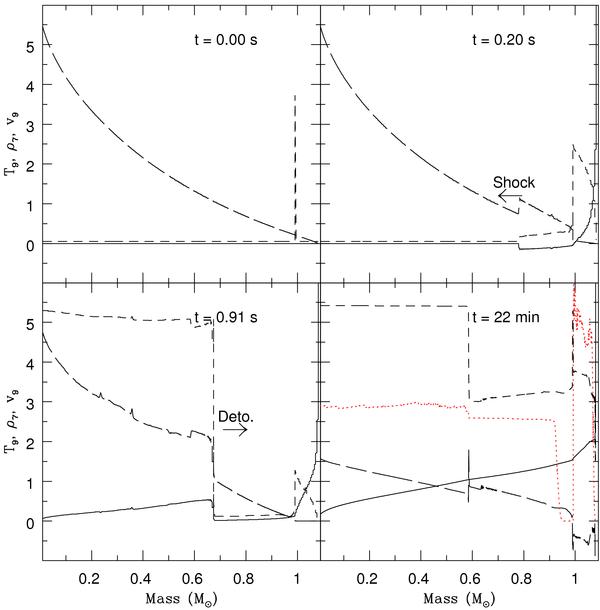Fig. 7

Development of the detonation of a sub-Chandrasekhar mass white dwarf that explodes at the beginning of the cooling process. From left to right and top to bottom, the first three panels show the profiles of temperature in units of 109 K (short-dashed line), density in units of 107 g cm-3 (long-dashed line), and velocity in units of 10 000 km s-1 (solid line), at three times since the beginning of He detonation. In this model, the He detonated at the base of the envelope, so it was unable to produce an edge-lit detonation of carbon (see Tables 2 and 3). Instead, an initially weak inwardly moving shock traveled through the white dwarf (second panel). Shortly before reaching the center, the shock strengthened enough to produce a carbon detonation that traveled outwards processing most of the matter on top (third panel). The last panel shows the final profiles of log (T) (short-dashed line), log (105ρ) (long-dashed line), velocity (solid line), and 50X(Fe,stable), where X(Fe,stable) is the mass fraction of stable Fe-group nuclei (red dotted line). The discontinuity in the thermal profile in the last panel is due to the local deposition of the photons emitted in the radioactive disintegration of 56Ni.
Current usage metrics show cumulative count of Article Views (full-text article views including HTML views, PDF and ePub downloads, according to the available data) and Abstracts Views on Vision4Press platform.
Data correspond to usage on the plateform after 2015. The current usage metrics is available 48-96 hours after online publication and is updated daily on week days.
Initial download of the metrics may take a while.


